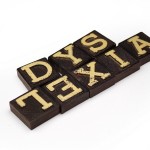Dyslexia: Tools to Help Your Dyslexic Student
 As a parent, it is heartbreaking to see your children struggle. We want the best for our kids and often turn ourselves inside out to give them every opportunity to succeed. But what about a child that can’t read? How does a child with dyslexia feel when they’re labeled—stupid, lazy, or mentally slow? And yet you know that’s not who they are. You see how bright they are and how hard they work.
As a parent, it is heartbreaking to see your children struggle. We want the best for our kids and often turn ourselves inside out to give them every opportunity to succeed. But what about a child that can’t read? How does a child with dyslexia feel when they’re labeled—stupid, lazy, or mentally slow? And yet you know that’s not who they are. You see how bright they are and how hard they work.
Winston Churchill, Thomas Edison, Albert Einstein, General George Patton and Walt Disney were dyslexic. They were labeled, discouraged and struggled in the classroom. And yet they, and many other children with dyslexia, accomplished unexpected greatness in their respective fields.
In Being Visual, I share details on the relationship between dyslexia and right-brain, visual thinking. It turns out that dyslexics think in pictures instead of words, are highly intuitive (another right-brain trait) and think three-dimensionally. Like visual learners, students with dyslexia need mental images to read and can be challenged with math, spelling and writing because they involve spoken and written words. Their dimensional abilities, while a tremendous gift, cause words to appear to them in a multitude of variations, creating enormous challenges.
The arts, essential for developing visual abilities in children, as well as many of the teaching strategies that work with visual-spatial kids, are effective in developing study and learning abilities that help children with dyslexia. Here’s a great tool you can use at home for your struggling child that will make reading FUN!
 |
Bette FetterFounder and CEO of Young Rembrandts and Author of Being Visual |










